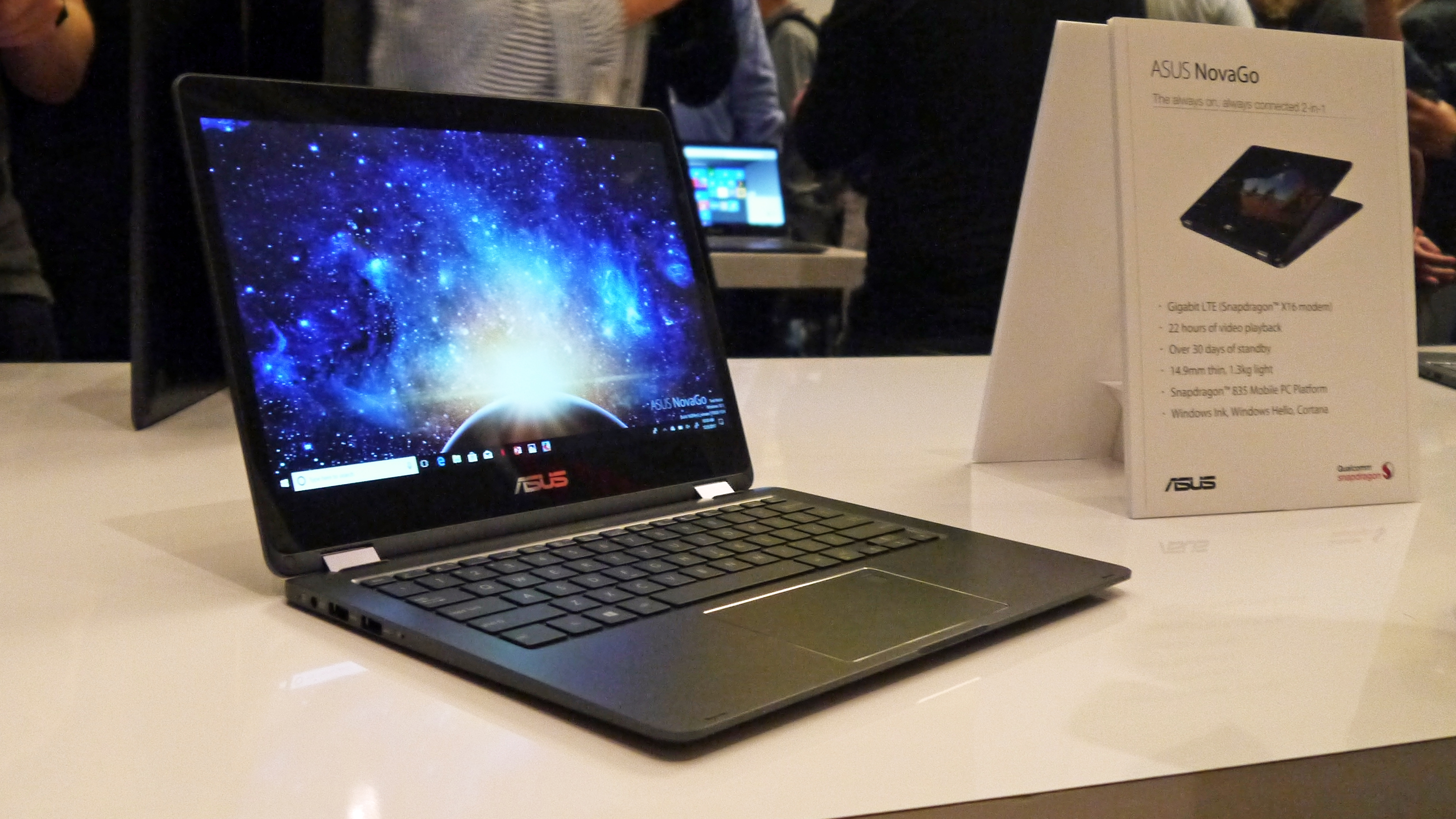Microsoft: Qualcomm is just the beginning of ‘Always Connected PC’
PCs that work like phones is about more than Snapdragon

It’s no secret that the first Qualcomm Snapdragon 835-powered laptops are getting a bad rap for their purported performance versus price ratio. So, Microsoft wants to set the record straight, telling us that these first devices are just the beginning of its larger ‘Always Connected PC’ (ACPC) initiative.
“We don't equate ‘Always Connected PC’ with Qualcomm,” Microsoft Windows general manager Erin Chapple says. “We’re about choice in the ecosystem and working across our partners.”
Now, this isn’t Microsoft distancing itself from Qualcomm or this first run of ACPC products – in fact, it’s anything but.
“There will be future [ACPC] devices based on future versions of the Qualcomm silicon,” Chapple teases.
“You will see [ACPC] performance improvements between the Fall Creators Update and the RS4 updates that we’ve been delivering [through the Windows Insider program]."
Microsoft's Erin Chapple
However, according to Microsoft, an ACPC isn’t simply a Windows 10 laptop with an ARM-based processor inside. Chapple reiterates to us that an ACPC is a type of computer that achieves always-on connectivity through LTE (or 5G in the future), can go to sleep without losing progress in internet-connected apps and lasts for more than a dozen hours on a charge.
In short, an ACPC is a Windows 10 laptop or tablet that, for all intents and purposes, behaves more like a smartphone. However, that definition doesn’t dictate the hardware inside, with Chapple making an interesting point in illustrating this fact.
“Today, we have the three devices [the HP Envy x2, Lenovo Miix 630 and Asus NovaGo] we’ve launched on the Qualcomm processor,” Chapple says. “We also have our Surface Pro LTE, which we consider our first Always Connected PC.”
Sign up for breaking news, reviews, opinion, top tech deals, and more.
That’s right, the first Microsoft ACPC has been out for months – using an Intel processor and Qualcomm LTE modem – before the first three Snapdragon laptops hit the market. That’s because, as per Microsoft’s definition, the Surface Pro LTE fits the ACPC bill.

Today’s Always Connected PCs will get better
Microsoft tells us that its ACPC mission will continue to evolve, including more chipmakers in the process than just Intel, AMD and Qualcomm. There will also be more device makers in addition to the three aforementioned laptop and tablet manufacturers.
"We have faith in the [ACPC] device category and S Mode."
Microsoft's Erin Chapple
However, that doesn’t address concerns with the current lot of machines when it comes to performance versus price.
“You will see [ACPC] performance improvements between the Fall Creators Update and the RS4 updates that we’ve been delivering [through the Windows Insider program],” Chapple tells us.
Of course, what Chapple is referring to is Redstone 4, the internal codename for what many expect to be called the Spring Creators Update, the next major revision of Windows 10 that’s due any day now.
Chapple promises demonstrable increases in current ACPC performance between these two versions of the operating system, not to mention moving forward. Future major Windows 10 updates will consider ACPC to be a focus on top of the updates’ normal remit of new features and interface tuning.
However, Microsoft has no intention of turning its back on Windows 10 S – soon to be simply ‘S Mode’ – which is clearly a core tenet of the ACPC initiative.
“I think it’s important for us to ground the fact that we start the [ACPC] devices in what is now S Mode in the next Windows 10 update that’s coming,” Chapple says, “because we have faith in the device category and S Mode. For the target demographic that we’re going after, they spend much of time in the native operating system, the browser and Office.”
Naturally, those are the three functions that Windows 10 S pulls off best. But, don’t fret, Chapple tells us that not only will Microsoft continue to allow ACPC users to opt out of Windows 10 S Mode, but it plans to improve Windows 10 Home performance and compatibility in ACPC products in the future.
“We, of course, enable you to activate Windows 10 Home mode,” Chapple says, “and will then introduce you to the emulation layers to enable use of all aps.”
Chapple is referring to the current need for Windows 10 Home and Pro versions to emulate apps that were natively developed for mobile-first, or x64, processors from fabricators like ARM, not the x86 processors that have dominated Windows devices for years. Of course, emulation – using backend software to recreate a hardware environment – creates an additional load on any processor, and thus a hit to performance.
So, Chapple reminded us to watch out for its Build 2018 conference, where it plans to release an x64 software developer kit for app developers to even more easily bring their apps developed first for mobile to run natively on Windows 10 proper – not just S Mode.
In short, this stumble out of the gate has not deterred Microsoft from its mission to make laptops work more like smartphones. Rather, it seems the firm is only that much more bent on seeing such devices, Always Connected PCs, pave the way forward in mobile computing.
- These are the best laptops we’ve tested this past year

Joe Osborne is the Senior Technology Editor at Insider Inc. His role is to leads the technology coverage team for the Business Insider Shopping team, facilitating expert reviews, comprehensive buying guides, snap deals news and more. Previously, Joe was TechRadar's US computing editor, leading reviews of everything from gaming PCs to internal components and accessories. In his spare time, Joe is a renowned Dungeons and Dragons dungeon master – and arguably the nicest man in tech.